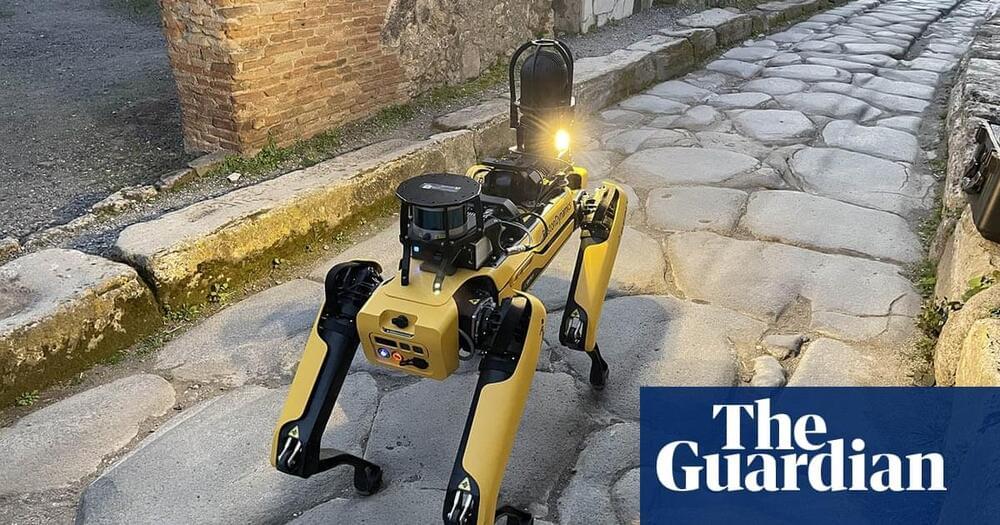
Get the latest international news and world events from around the world.


The biggest problem in AI? Machines have no common sense
What most people define as common sense is actually common learning, and much of that is biased.
The biggest short term problem in AI: as mentioned in the video clip, an over-emphasis on data set size, irrelevant of accuracy, representation or accountability.
The biggest long term problem in AI: Instead of trying to replace us we should be seeking to complement us. Merge is not necessary nor advisable.
If we think about it, building a machine to think like a human is like buying a race horse and insisting for it to function like a camel. And it is doomed to fail. Cos there are only two scenarios: Either humans are replaced or they are not. If we are, then we have failed. If we are not replaced, then the AI development has failed.
Time for a change of direction.
I think of a super intelligent learning machine as a data addict and then it’s easy to see how we fit in.

James Webb Space Telescope unfolds mirrors, completes deployment
Spreading its mirror wings was the telescope’s last big step in its complicated deployment.
NASA has pulled off the most technically audacious part of bringing its newest flagship observatory online: unfolding it.
On Saturday, Jan. 8, the operations team for the James Webb Space Telescope (JWST) announced that the observatory’s primary mirror had successfully unfolded its segments — the last major step of the telescope’s complicated deployment.
The moment was a euphoric moment of validation for the entire team. “We’re on an incredible high right now,” said Bill Ochs, JWST’s project manager, at a press conference. “Today represents the beginning of a journey for this incredible machine, to its discoveries that we’ll be making in the future.”

1000X More Efficient Neural Networks: Building An Artificial Brain With 86 Billion Physical (But Not Biological) Neurons
Which, to me, sounds both unimaginably complex and sublimely simple.
Sort of like, perhaps, like our brains.
Building chips with analogs of biological neurons and dendrites and neural networks like our brains is also key to the massive efficiency gains Rain Neuromorphics is claiming: 1,000 times more efficient than existing digital chips from companies like Nvidia.


Explainable AI (XAI) with Class Maps
Introducing a novel visual tool for explaining the results of classification algorithms, with examples in R and Python.
Classification algorithms aim to identify to which groups a set of observations belong. A machine learning practitioner typically builds multiple models and selects a final classifier to be one that optimizes a set of accuracy metrics on a held-out test set. Sometimes, practitioners and stakeholders want more from the classification model than just predictions. They may wish to know the reasons behind a classifier’s decisions, especially when it is built for high-stakes applications. For instance, consider a medical setting, where a classifier determines a patient to be at high risk for developing an illness. If medical experts can learn the contributing factors to this prediction, they could use this information to help determine suitable treatments.
Some models, such as single decision trees, are transparent, meaning that they show the mechanism for how they make decisions. More complex models, however, tend to be the opposite — they are often referred to as “black boxes”, as they provide no explanation for how they arrive at their decisions. Unfortunately, opting for transparent models over black boxes does not always solve the explainability problem. The relationship between a set of observations and its labels is often too complex for a simple model to suffice; transparency can come at the cost of accuracy [1].
The increasing use of black-box models in high-stakes applications, combined with the need for explanations, has lead to the development of Explainable AI (XAI), a set of methods that help humans understand the outputs of machine learning models. Explainability is a crucial part of the responsible development and use of AI.

Robot dog called in to help manage Pompeii
A four-legged robot called Spot has been deployed to wander around the ruins of ancient Pompeii, identifying structural and safety issues while delving underground to inspect tunnels dug by relic thieves.
The dog-like robot is the latest in a series of technologies used as part of a broader project to better manage the archaeological park since 2013, when Unesco threatened to add Pompeii to a list of world heritage sites in peril unless Italian authorities improved its preservation.

AI, the brain, and cognitive plausibility
This point was made clear in a recent paper by David Silver, Satinder Singh, Doina Precup, and Richard Sutton from DeepMind titled “Reward is Enough.” The authors argue that “maximizing reward is enough to drive behavior that exhibits most if not all attributes of intelligence.” However, reward is not enough. The statement itself is simplistic, vague, circular, and explains little because the assertion is meaningless outside highly structured and controlled environments. Besides, humans do many things for no reward at all, like writing fatuous papers about rewards.
The point is that suppose you or your team talk about how intelligent or cognitively plausible your solution is? I see this kind of solution arguing quite a bit. If so, you are not thinking enough about a specific problem or the people impacted by that problem. Practitioners and business-minded leaders need to know about cognitive plausibility because it reflects the wrong culture. Real-world problem solving solves the problems the world presents to intelligence whose solutions are not ever cognitively plausible. While insiders want their goals to be understood and shared by their solutions, your solution does not need to understand that it is solving a problem, but you do.
If you have a problem to solve that aligns with a business goal and seek an optimal solution to accomplish that goal, then how “cognitively plausible” some solution is, is unimportant. How a problem is solved is always secondary to if a problem is solved, and if you don’t care how, you can solve just about anything. The goal itself and how optimal a solution is for a problem are more important than how the goal is accomplished, if the solution was self-referencing, or what a solution looked like after you didn’t solve the problem.

Grand challenges in AI and data science
This conference will take place at EMBL Heidelberg, with a live streaming option for virtual participants free of charge. Proof of COVID-19 vaccination or recovery is required for on-site attendance. Please see EMBL’s COVID-19 terms and conditions.
Workshop registration is available only to EIROforum members. Please note the workshop is an on-site-only event and contact Iva Gavran for more information or use this link for registration.

Here’s who’s flying on Thursday’s Blue Origin space launch
Pete Davidson was initially slated to be the next headline-grabbing name to take flight aboard the suborbital space tourism rocket developed by Jeff Bezos’ company, Blue Origin, after the commercial space company launched several other famous faces on its previous flights.
But the comedian abruptly dropped out of the mission after a schedule change pushed the flight back by a week. His seat was given to longtime company employee Gary Lai, the chief architect of the very rocket he’ll fly on. Lai will be joined by five paying customers who had the means to dish out an undisclosed sum for one of the coveted crew capsule seats.
Liftoff of the New Shepard launch vehicle had been scheduled for Tuesday morning, but the company said that it’s expecting rough winds at its facilities near Van Horn, Texas at that time. Blue Origin is now targeting Thursday at 8:30 am CT. Those interested in catching the action — which is expected to look much like Blue Origin’s three earlier suborbital jaunts — can tune into Blue Origin’s webcast Thursday morning.